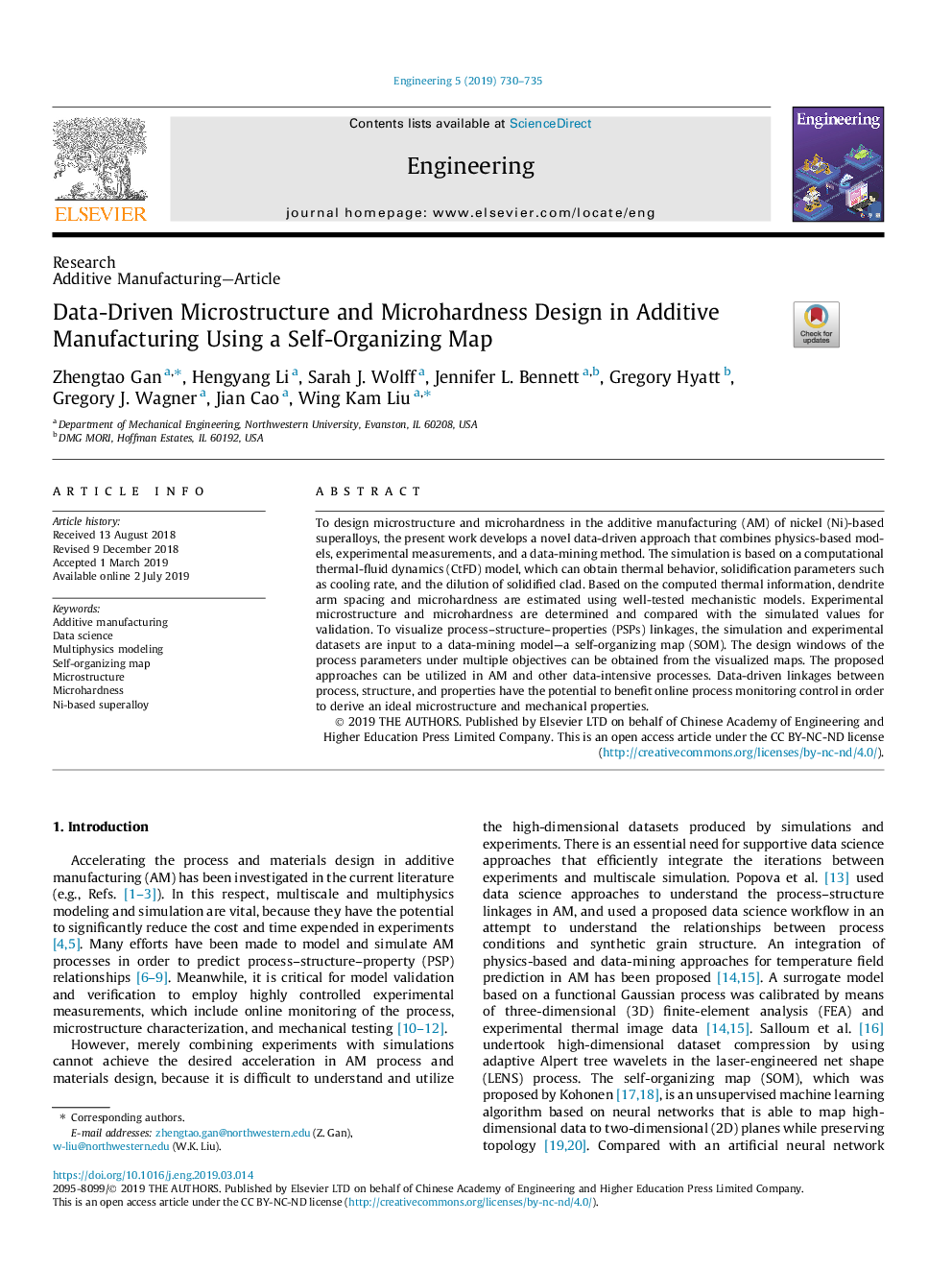| Article ID | Journal | Published Year | Pages | File Type |
|---|---|---|---|---|
| 13433263 | Engineering | 2019 | 6 Pages |
Abstract
To design microstructure and microhardness in the additive manufacturing (AM) of nickel (Ni)-based superalloys, the present work develops a novel data-driven approach that combines physics-based models, experimental measurements, and a data-mining method. The simulation is based on a computational thermal-fluid dynamics (CtFD) model, which can obtain thermal behavior, solidification parameters such as cooling rate, and the dilution of solidified clad. Based on the computed thermal information, dendrite arm spacing and microhardness are estimated using well-tested mechanistic models. Experimental microstructure and microhardness are determined and compared with the simulated values for validation. To visualize process-structure-properties (PSPs) linkages, the simulation and experimental datasets are input to a data-mining model-a self-organizing map (SOM). The design windows of the process parameters under multiple objectives can be obtained from the visualized maps. The proposed approaches can be utilized in AM and other data-intensive processes. Data-driven linkages between process, structure, and properties have the potential to benefit online process monitoring control in order to derive an ideal microstructure and mechanical properties.
Keywords
Related Topics
Physical Sciences and Engineering
Computer Science
Computer Science (General)
Authors
Zhengtao Gan, Hengyang Li, Sarah J. Wolff, Jennifer L. Bennett, Gregory Hyatt, Gregory J. Wagner, Jian Cao, Wing Kam Liu,
